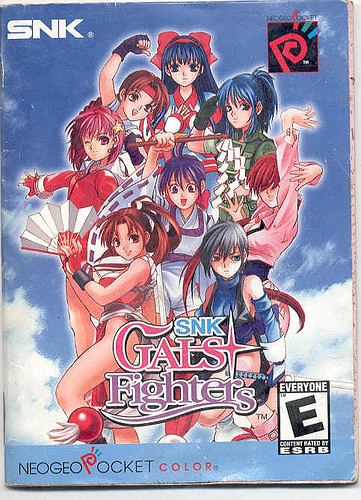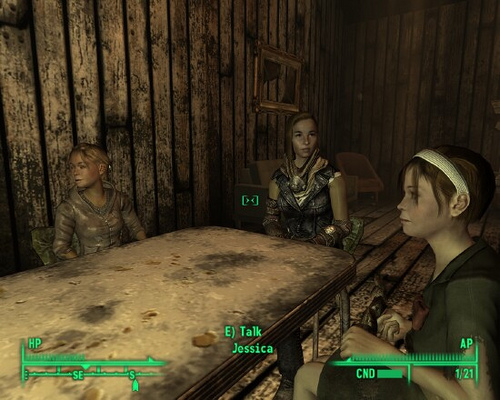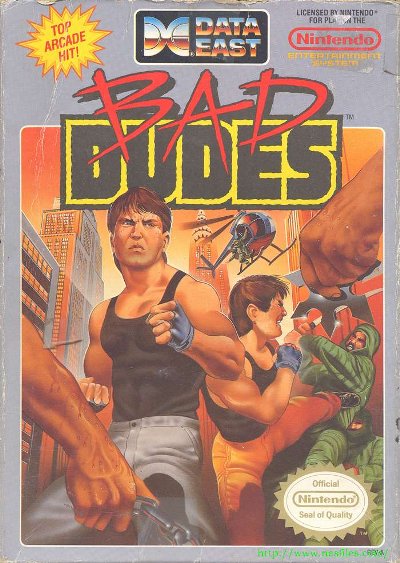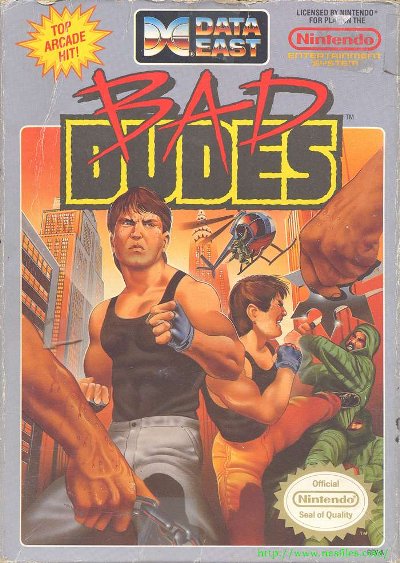Editor's note: Daniel confronts the problem of a lack of female characters in games with science. -Demian
The Bechdel Test is a simple method of gauging the presence of female characters in a motion picture. To pass the test, a film must [1] have at least two women present, [2] they must talk to each other, [3] that conversation must be about something other than a man. Of the hundreds of movies made in the United States each year, you would be surprised how few movies pass this test.
Of course, there are stories about men worth telling, and not every film needs to have two women in it who talk to each other. What’s outrageous is that we even need a Bechdel Test to measure female presence in media. Try a reverse-Bechdel Test (looking at men rather than women) and you’ll have to search really hard to find even a single failure.
Enough about movies, let’s get to the point: video games. Games aren't exactly the most female friendly medium around. Millions of women play games, of course, but they are somehow dismissed, ignored or outright condescended to with “girl games” about playing dress up and tending to horses. My wife loves sudoku and can finish a puzzle twice as fast as I can. She’s not interested in Barbie.
Applying the Bechdel Test to games is hard because, as I've mentioned before, games usually don’t have a whole lot of talking going on. Sure, they often have plenty of recorded dialogue, but it’s usually less of a conversation and more like a series of scheduled utterances. The survivors in Left 4 Dead talk constantly, but they have precious little to say. Bioshock is one of the greatest games I’ve ever played, but the protagonist simply listens to others speak at length.
Instead, let us create a new version of the Bechdel Test, one that better fits the gaming world.
Call it Bechdel 2.0 for that 21st century technological feel. Rule #1should not change; assuming a game has characters in it, expecting two women to appear is hardly a stretch. At the risk of sounding simplistic, if developers can create male 3D models, why not some female 3D models? If there are monsters, zombies, or aliens to fight, can’t a few of them be female?
Rule #2 is where things get tricky, because game characters are not as verbose as their TV and movie counterparts. And since players control the action, there’s no guarantee that two game sessions will involve the same situations. Instead, let’s simplify it and say that the female characters must be able to interact with one another as the male characters do. If it’s a fighting game, that means playable female combatants. If it’s a shooter, there should be ladies shooting at each other. If it’s a dialogue-heavy game (written or spoken), then they should talk.

For convenience’s sake, I propose dropping rule #3 altogether since our new rule #2 includes all meaningful interaction. This makes Bechdel 2.0 more forgiving than the original, but it’s a reasonable compromise to make given the limitations of the medium. Video games allow players to tell their own stories, so there’s no reason to artificially impose rules on what those stories must entail.
Now that we’ve got our new Bechdel Test, what games measure up? Portal immediately jumps to mind as there’s only two characters in the game and both identify as female (even if one’s a computer and the other doesn’t speak). Other Valve games that pass the test include Left 4 Dead and its sequel, because both games have female survivors as well as infected. Team Fortress 2 doesn't, but it’s worth mentioning that a Bechdel-minded modder has written at length about female versions of eight of the nine characters (Pyro being the odd man out, because he might already be a she).
Fighting games might be among the worst culprits when it comes to pandering to adolescent male fantasies (Dead or Alive, I’m looking at you) but the genre proves to be quite robust in terms of Bechdel 2.0. Street Fighter, King of Fighters, Darkstalkers, Marvel vs. Capcom, Mortal Kombat, Tekken, Virtua Fighter, Soul Calibur and Super Smash Bros. all feature numerous recurring female characters. There was even Gals Fighters on the Neo Geo Pocket which featured nothing but women (save for the last boss, a man in drag).

Classic Nintendo franchises fare less well. Traditional Mario games relegate the series’ lone female character to a perpetual damsel in distress role. New Super Mario Bros. Wii was particularly disappointing in this regard, as that game has four different playable heroes — all male. Wired Game|Life asked Shigeru Miyamoto about this disparity and he insisted Princess Peach's dress was too complex. Was a wardrobe change out of the question? She doesn’t play golf in that dress, after all.
The Legend of Zelda might have a lady’s name right there in the title, but few games in the series pass Bechdel 2.0, as Zelda spends most of her time, like Peach, as a prisoner. Ocarina of Time is a notable exception: many of the Sages are female, the Gerudo are almost entirely women, and there’s a boss battle against twin witches.
What about Metroid? It all depends on whether you consider Mother Brain to be a female or not. Certainly Metroid 2 qualifies as the final battle pits Samus against a Queen Metroid. The forthcoming Metroid: Other M might pass the test as well, given that the trailers suggest a larger cast of characters than normally seen in the franchise.

Role-playing games are a strong genre for females, especially games that allow you to customize your player character. I only played Fallout 3 for 10 minutes before my female avatar was chatting with her best friend, the daughter of the Vault’s Overseer. While some might call this a cheat, it’s worth noting that not every game allows for female player characters. The makers of Crackdown 2 recently defended the lack of women parts in their character customizer as a matter of resource management. I later read an amusing April Fool’s response to that line of thinking where a developer apologized for not having any money for male characters.
Ultimately, a Bechdel Test for games does little to address the problems of objectification and misogyny in our medium, but at the very least it’s a working measurement of female representation, and that counts for something. Put simply, there’s no reason for the lack of women in games other than cowardice: Game developers think that their customers will only identify with male player characters. I’m willing to bet they are wrong. Who’s with me?
Daniel Feit was born in New York but now lives in Japan, where he teaches English to Japanese children and writes for Wired Game|Life & Film Junk. Follow him on Twitter @feitclub or visit his website, feitclub.com.




